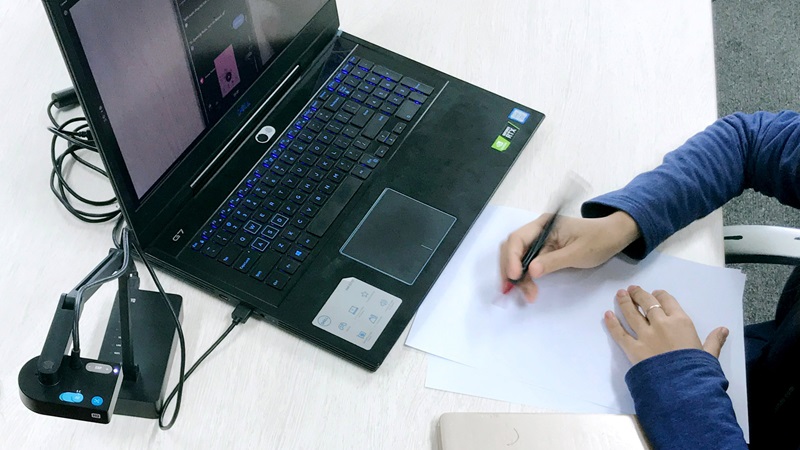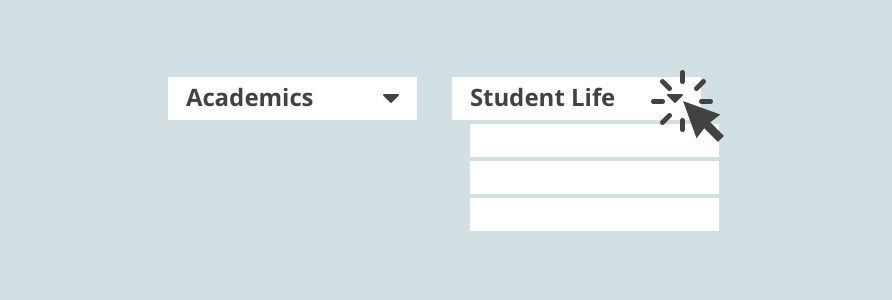The Role of Usability Testing in Velir’s Design Process

Usability testing is one of many practices Velir employs as part of a holistic user-centric design process. Putting our designs in front of real users of a website is one of the most enjoyable things we do—it’s the moment we bring our work to life. We observe how people use what we’ve designed and see how our designs fare—see what we’ve gotten right and see where there are opportunities to improve. It can be humbling at times, just as it can be validating. Usability testing certainly can’t teach us everything we need to make great design decisions—it doesn’t replace other forms of research, expertise, and good instincts—but it does teach us a lot. Usability testing takes the pressure off our design team and off our clients to have to be certain about everything.
Usability Testing Teaches Us What We Wouldn’t Otherwise Know
Every usability test we run unearths at least one nugget of information that brings us closer to a more user-friendly solution. Recently, we were working on the navigation structure for a college website. An important differentiator for this college is the extent to which students gain on-the-job experience before they graduate. The faculty speak about the work experiences as part of the “academic” curriculum, which makes a lot of sense given that they develop and coordinate the program to fit with academics.
When we tested the navigation, however, several student participants surprised us and went looking for the information under “student life”. Had we not tested the navigation with students, we might have introduced a findability issue into the design. Instead, we were able to use what we learned to recommend an approach that matched how students think while still supporting the mindsets of faculty and staff.

Usability Testing is Most Effective If Included Throughout a Project
Usability testing is best incorporated not just once, but iteratively throughout a web design project and even after a website already lives out in the wild. Velir employs different types of tests depending on the situation. Early in a project, we’ll focus on the structure (or architecture) of a website to validate whether people can efficiently find what they need just based on our proposed navigation. Soon after, we’ll see how people react to layouts and visual styles. Later in a project, we’ll observe how people fare completing more complex tasks, navigating through multiple screens of a working prototype. If we’re working on suspected issues with an existing site, we’ll conduct usability tests to help identify, understand, and solve for those issues.
Recruiting and Incentivization
Recruiting is often one of the biggest challenges noted by our clients—from finding the right participants, to figuring out the right incentives, to the simple act of scheduling. Velir has ways to help ease the process. Sometimes we help clients recruit from within their own network using their own communication channels. Other times, we employ third-party recruitment services that reach out on behalf of us based on our requirements. There are low-cost services that recruit from large panels of consumers. There are mid-tier services that find people based on various demographics or job descriptions. There are also highly-custom, more expensive options that recruit based on specific requirements. Velir works closely with our clients to determine the best-fit approach.
Recently, Velir put together a recruitment plan for a health-related organization that has a difficult time reaching beyond the bounds of its member list. We put together a hybrid approach that involved recruiting both from their membership and by using a third-party service. By leaning on the recruitment service, we were able to quickly identify and contact new professionals in the health space. In the end, we had the right array of participants for testing and also expanded our client’s list of contacts.
Regardless of the approach, Velir always recommends offering an incentive of some kind to encourage participation and thank participants for their time. Incentives don’t always have to be substantial. Sometimes cool swag, a $10 gift card, or the opportunity to be entered into a raffle to win something will be enough. For longer tests or harder-to-reach audiences—such as busy executives whose time is at a premium—we might recommend as much as a $100 cash gift card or more.
Test Using Fewer People, More Often, Effectively
Our clients are becoming increasingly aware of the value of usability testing, but the whole planning process can still feel a bit overwhelming at times. One important thing we keep in mind at Velir is that it’s best to not get too hung up by one big test. Instead, we aim to be nimble, testing strategically and often, rather than in one large push.
We don’t often need to recruit a lot of participants. Most usability tests provide meaningful and impactful results with as little as 5-20 participants, depending on the type of test. We tend to find that we see the same user behaviors and findings cropping up and repeating themselves as we increase the number of tests. We can save some time and learn more by testing fewer people more often.
We are also strategic about what we test—making sure to focus our efforts on what’s most important, what will be most impactful to the project, and which user groups are best equipped to teach us what we need to know. This means focusing all the time on what a website’s users want, and what we want for them. By being strategic in this way, Velir can complete planning, recruitment, testing, and analysis in less than three weeks for most tests. That timeline tightens up considerably with the help of the aforementioned recruiting services.
Conclusion
Usability testing is not just valuable, but integral to a user-centric design process. It reveals how the external world will interact with what we’ve designed together with our clients. No amount of stakeholder and secondary user research will teach us the whole of how people will use a new website when it’s put in front of them. Usability testing helps cut through everything we think we might know to the reality of what people do. The knowledge we gain from usability testing helps us create more positive online experiences that better align to what people need and ultimately make their lives easier.
Have you conducted usability testing or taken part in it? Do you have feedback and insights to share? We’d love to hear your thoughts and experiences. Please add to the discussion via the comments below or Tweet Us, @Velir!



